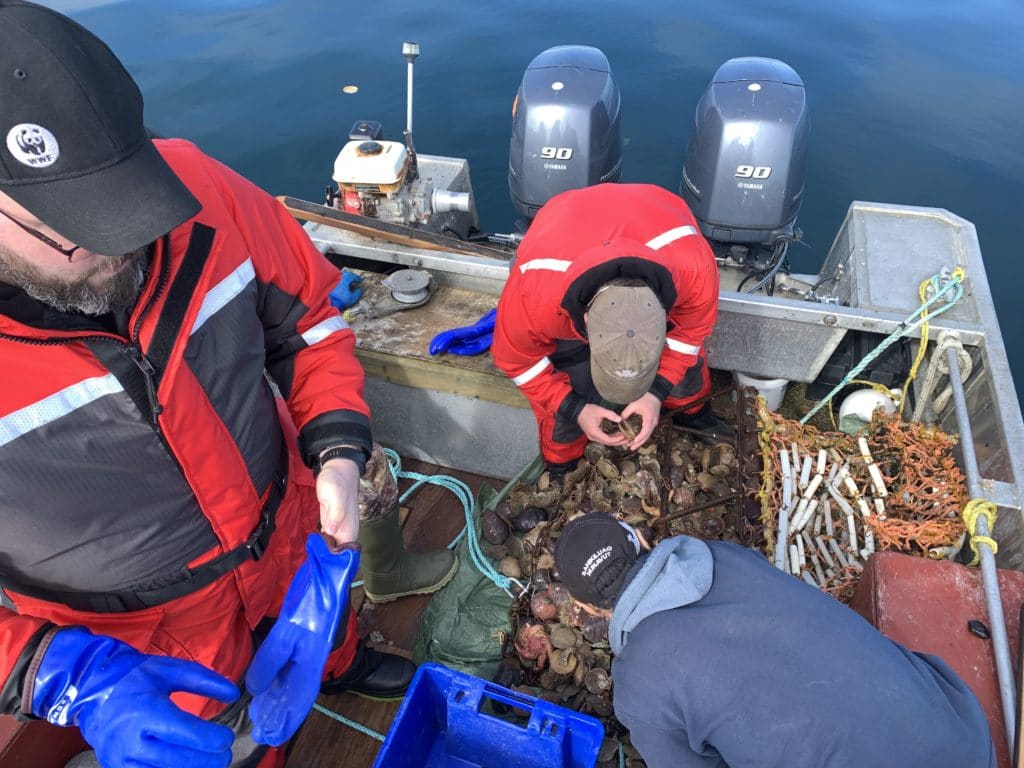Fishing for a new renewable resource in Nunavut
To support sustainable, low-impact and Inuit-owned alternatives to industries like mining or oil and gas, WWF-Canada is partnering with Nunavut communities in Kinngait, Sanikiluaq and Arviat to help locals develop management plans for small-scale community-based commercial fisheries. We spoke to Doug Chiasson, our senior specialist in marine development, to find out more.

First off, what is the economic situation?
Communities in Nunavut have some of the highest unemployment rates in the country, often in excess of 20 per cent. Some have looked to mineral exploration while others have focused on traditional art or tourism. But increasingly, communities are looking to the sea for opportunity.
How is WWF able to help with that effort?
Species like Icelandic scallops, sea cucumbers, green sea urchins and blue mussels all call the frigid waters of Hudson Bay home. So, last September, a team of researchers, local harvesters and I undertook an initial survey near Sanikiluaq in southeastern Hudson Bay to determine the feasibility of establishing a commercial fishery. The community has made a number of attempts at experimental fisheries since the 80s, but they’ve never had the support to get over the hump into actual commercial production. We’re hoping that’s what we can help provide.
The community has the local fishing expertise; what were you able to add?
I brought a remote-operated vehicle — which is an underwater drone that sends footage to the surface through an iPhone attached to an X-Box game controller — so we could get a good look at what’s going on the seafloor to complement what we could learn from traditional and commercial harvesting methods.
Did we find anything?
Luckily, we did! We found significant numbers of our target species, so we were really encouraged by the results. We’re now working with an artificial intelligence firm to develop a machine learning algorithm to process the video and spit out abundance estimates while the analysis of biological samples we took will give us important insights into the life-cycle and nutritional value of what we were able to fish.
What’s next for our community-based Arctic fisheries project?
WWF-Canada will undertake more surveys around Sanikiluaq and begin surveys for crab and shrimp in the Hudson Strait with the community of Kinngait. We’ll also be supporting commercial harvesting for whitefish inland from western Hudson Bay with partners in Arviat.
These are early days yet for the surveys, but our partners are hopeful. Future commercial fisheries will build on both this research and the accumulated ancestral knowledge of harvesters. Locals see this as a way to address food insecurity at home and supplement the local economy through sales to other parts of Canada and around the world.

